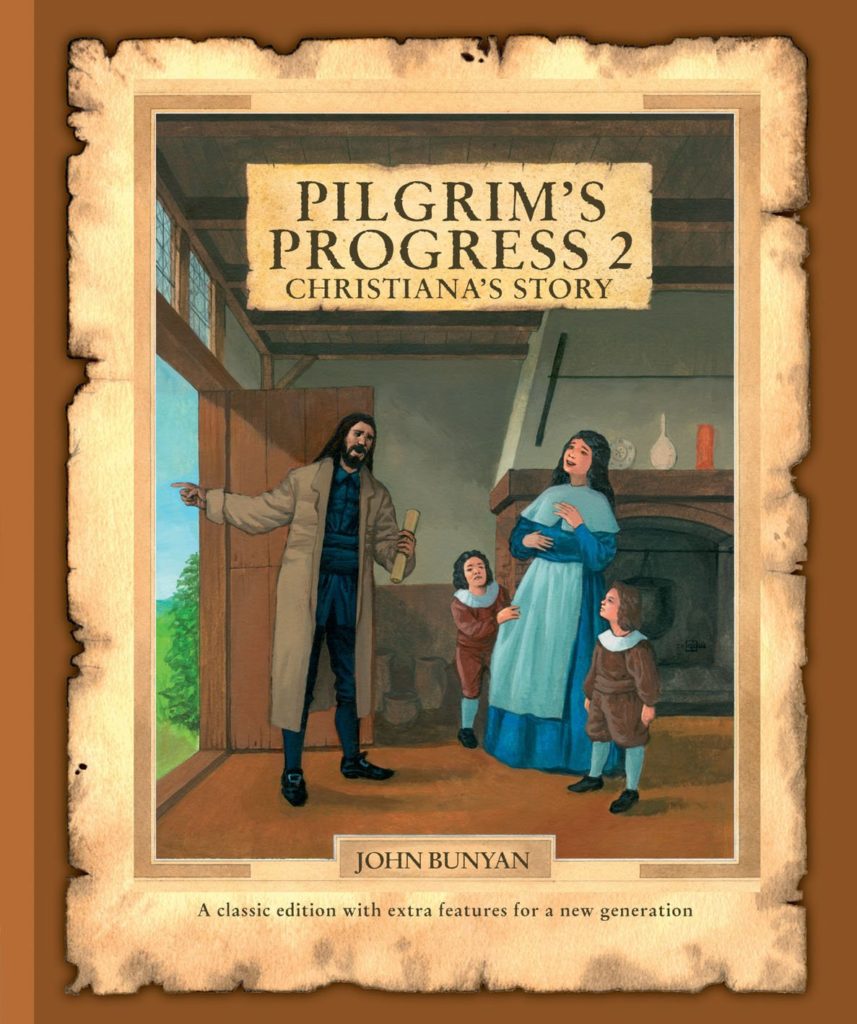Explore Pilgrim's Progress Part 2: Christiana's Journey & More
Can a second journey truly rival the first, especially when the path is already well-trodden? The tale of Christiana, as presented in John Bunyan's "The Pilgrim's Progress, Part 2," demonstrates that while the destination may be the same, the experience, the struggles, and the triumphs can carve a unique and equally compelling narrative.
The enduring appeal of "The Pilgrim's Progress" lies not only in its allegorical representation of the Christian journey but also in its accessibility. It's a story that has resonated with readers for centuries, translated into more than 200 languages and remaining continuously in print since its original publication in February 1678. This is a testament to its enduring relevance, and the book continues to be studied and enjoyed by readers of all ages. The narrative, delivered under the similitude of a dream, offers profound theological insights wrapped in a captivating story. The second part, "Christiana's Journey," is more than just a sequel; it is a parallel narrative that expands on the themes introduced in the first installment.
Christiana, the wife of the protagonist in the first part, Christian, embarks on her own pilgrimage to the Celestial City, following in the footsteps of her husband. She undertakes this journey with her children and a friend, mirroring Christian's own quest for spiritual salvation. The pilgrimage takes the same routes that Christian took, re-visiting the same stopping places. There are places like the Valley of the Shadow of Death and Vanity Fair, the experiences that Christian underwent as well, with additional encounters added, such as the addition of Gaius' Inn, this second part of the journey offers a different perspective on the trials and tribulations of the spiritual life. The journey however, differs in several key aspects. Christianas journey unfolds over a longer timeframe, permitting for the inclusion of marriage and childbirth for her four sons and their wives. This extended time frame allows Bunyan to explore themes of family, community, and the nurturing of faith through generations. The Pilgrimage is a chance for the reader to experience the obstacles and opposition to enter the kingdom of glory.
The opening of part II of "The Pilgrim's Progress" mirrors the beginning of Part I, although, the opening is addressed to the book, with Bunyan using christiana as a metaphor.
This second part, "Christiana's Journey," is where the narrative offers a new dimension, as it is the same but different. This approach creates a powerful narrative dynamic, inviting readers to reflect on the nature of faith, perseverance, and the enduring human quest for meaning. "The Pilgrim's Progress" has never been out of print and is a great title from the reformation period, and excellent for children, as it covers some very deep theology in a well thought out parable.
| Book Title | The Pilgrim's Progress, Part 2: Christiana's Journey |
| Author | John Bunyan |
| Original Publication Date | 1678 |
| Genre | Christian Allegory |
| Key Themes | Faith, Salvation, Perseverance, Family, Community, Spiritual Growth |
| Protagonist | Christiana |
| Key Locations | Celestial City, Valley of the Shadow of Death, Vanity Fair, Gaius' Inn |
| Significance | One of the most significant works of religious English literature, translated into over 200 languages and continuously in print since its original publication. |
| Detailed Information | Britannica.com |
Why is Christiana, and indeed the reader, compelled to explore the depths of faith and righteousness? The journey is filled with a sense of shame and conviction. While Christian faced trials and tribulations, Christiana's journey is equally challenging, marked by her internal struggles and external tests. This inner turmoil is a catalyst for growth, forcing the protagonist to confront their own weaknesses and embrace the path of righteousness.
- Adrian Dunbar Height Bio Age Wife Net Worth More
- Unlocking The Cool A Guide To Steve Mcqueens Bullitt Style
The allegory's strength lies in its ability to create a universal language for the spiritual experience. It is not just a retelling of a story but an exploration of how individuals navigate the complexities of the human condition. The pilgrimage becomes a microcosm of life's journey, with all its pitfalls, detours, and moments of grace. The inclusion of family dynamics, particularly the marriage and childbirth of Christiana's sons, broadens the narrative's scope and adds layers of complexity. It underscores the importance of community and the passing down of faith from one generation to the next. Like Christian, the family must face the odds, obstacles, and opposition to enter the kingdom of glory. Bunyan's narrative continues to remind us that faith is not a solitary pursuit but a shared journey, shaped by the bonds of love, support, and shared beliefs.
The narrative structure of "The Pilgrim's Progress" allows Bunyan to explore different facets of the spiritual journey. While the first part primarily focused on the individual's struggle for salvation, the second part expands on this by incorporating the dynamics of family and community. This change acknowledges the importance of relationships in the spiritual life. The inclusion of Gaius' Inn, a place of rest and fellowship, highlights the role of community in providing support and encouragement along the way. The characters Christiana and her boys help others on the journey as well. The experience is a part of their growth.
The setting of the allegory is not just a backdrop but a character in itself. The places like the Valley of Humiliation and the Valley of the Shadow of Death test the pilgrims' faith. The visit of the same stopping places that christian visited provide a sense of continuity. "The Pilgrim's Progress" is a master class in storytelling, blending theological depth with relatable human experiences. Whether one is a seasoned theologian or a casual reader, Bunyan's work offers something for everyone. The allegorical nature of the story allows readers to interpret the events and characters according to their own experiences and understanding of faith. The book is a great read for the children as well.
The story of Christiana and her family is a powerful reminder that faith is not a solitary journey but a shared pilgrimage. Through their trials and triumphs, the pilgrims of "The Pilgrim's Progress, Part 2" model the transformative power of faith, family, and community. The book is full of biblical references. They visit the same stopping places that christian visited, with the addition of gaius' inn between the valley of the shadow of death and vanity fair. This second part of the journey has never been out of print and it is a great title from the reformation period. It is a christian allegory written by john bunyan and originally published in february, 1678.



Detail Author:
- Name : Sylvia Schoen DDS
- Username : pietro15
- Email : hubert.gottlieb@keebler.info
- Birthdate : 2002-03-21
- Address : 63883 Kirk Forge Lucystad, TX 69802-8198
- Phone : 786-495-0038
- Company : Bergstrom, Borer and Beier
- Job : Agricultural Crop Farm Manager
- Bio : Rerum quae architecto voluptatem omnis inventore est. Facere sapiente quidem quibusdam culpa. Tempore aut possimus illum soluta id. Autem consequatur et inventore ut non qui quisquam.
Socials
tiktok:
- url : https://tiktok.com/@esperanza_dev
- username : esperanza_dev
- bio : Autem autem ut aut dolor consequatur minus. Sed eos optio harum ratione.
- followers : 3470
- following : 2149
facebook:
- url : https://facebook.com/feest2018
- username : feest2018
- bio : Quo et iure suscipit autem odio occaecati voluptas.
- followers : 2996
- following : 1016